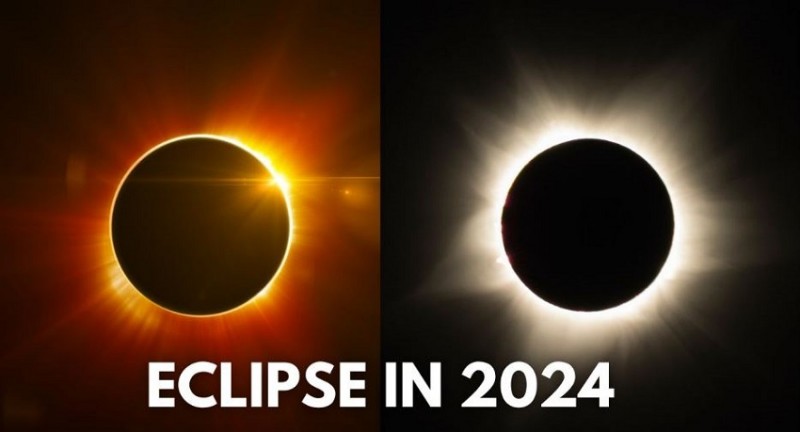25 Fascinating Facts About the 2024 Lunar Eclipse You Need to Know- Get ready for an extraordinary celestial event! Here are 25 captivating details about the upcoming 2024 total solar eclipse, set to sweep through Mexico, traverse the United States from Texas to Maine, and conclude its journey by darting across the eastern edge of Canada.
- First Eclipse in 7 Years: This marks the initial total solar eclipse in the continental U.S. in seven years, with the previous one occurring on August 21, 2017.
- Alignment of Celestial Bodies: A solar eclipse transpires when the Sun, Moon, and Earth align perfectly, casting a shadow on our planet.
- Occurs at New Moon: Solar eclipses only happen during the New Moon phase when the Moon aligns between the Sun and Earth.
- Irregular Frequency: Solar eclipses don’t transpire at every New Moon due to the Moon's orbit being tilted compared to Earth's orbit around the Sun.
- Variable Totality Lengths: The duration of total solar eclipse phases varies due to fluctuations in the distances between Earth, the Sun, and the Moon.
- Understanding Magnitude and Obscuration: Astronomers measure solar eclipses based on magnitude and obscuration, indicating the percentage of the Sun's diameter covered by the Moon during maximum eclipse.
- Recurring Cycles: Solar eclipses occur between Saros cycles, recurring approximately every 18 years and 11 days.
- Partial Eclipse Visible to All: Residents across the continental U.S. will witness at least a partial eclipse, with even a 16 percent coverage visible from Washington's Neah Bay.
- Importance of Totality: Partial eclipses pale in comparison to the awe-inspiring experience of witnessing totality, where the Sun is completely obscured by the Moon.
- Optimal Viewing Position: To maximize the eclipse experience, aim to be on the center line of the Moon’s shadow path.
- Beginning in Texas: The total eclipse's first contact point in the U.S. will be in Las Quintas Fronterizas, Texas.
- Path Through 15 States: The eclipse's trajectory crosses 15 states, offering various degrees of totality to different regions.
- Maximum Totality Duration: The longest duration of totality for this eclipse is 4 minutes and 28 seconds.
- Conclusion in Maine: Totality bids farewell to the U.S. at the eastern edge of Littleton, Maine.
- Preceding and Following Phases: Pay attention to the partial eclipse phases leading up to and following totality for unique celestial phenomena.
- Most-Viewed Eclipse: The 2024 eclipse is anticipated to be the most-viewed due to media coverage, accessible highway systems, favorable weather, and proximity to major cities.
- Viewing Opportunities in Major Cities: Several large cities along the eclipse path, including San Antonio, Austin, and Dallas, will experience significant coverage.
- Population Along the Path: Over 31.5 million people reside within the eclipse path, making it easily accessible to a large population.
- Safety During Totality: It is safe to view the eclipse without protection only during the brief period of totality.
- Relative Sizes of Sun and Moon: Despite vastly different sizes, the Sun and Moon appear similar in size from Earth, enhancing the spectacle of total eclipses.
- Naked Eye Observation: Total solar eclipses are visually stunning and can be observed without telescopes.
- Environmental Changes: As totality approaches, expect changes in lighting, temperature, and wildlife behavior.
- Maximum Duration Forecast: While this eclipse's maximum totality duration is around 4 minutes and 28 seconds, longer durations are possible in the future.
- Future Eclipse Dates: Mark your calendars for upcoming total solar eclipses in 2044, 2045, and 2078.
- Guaranteed Event: Unlike some celestial occurrences, the 2024 total solar eclipse is a predictable and guaranteed event.
Get ready to witness an extraordinary celestial event that promises to captivate millions across North America!
